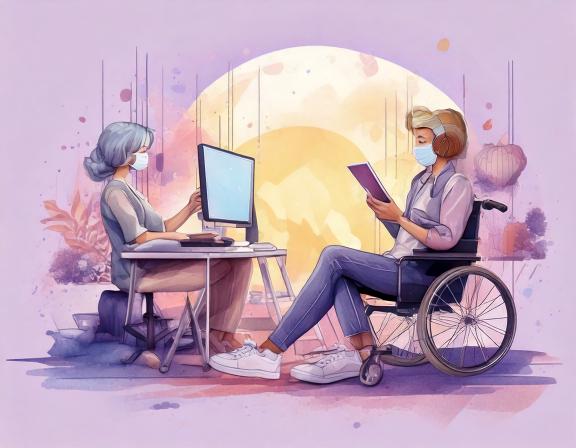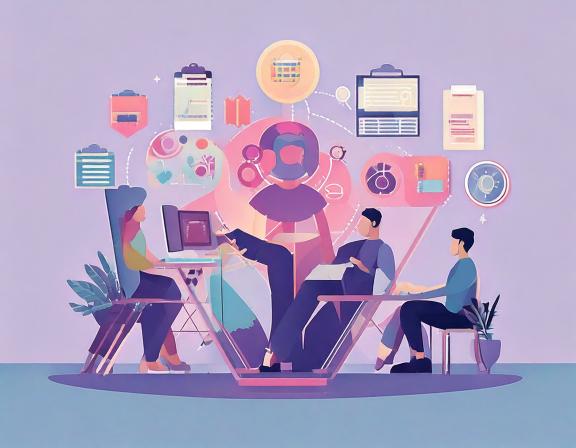What is Physical AI?
Physical AI refers to the integration of artificial intelligence (AI) with robotics to create intelligent systems capable of autonomous decision-making and adaptive behavior in the physical world. This concept combines AI's cognitive capabilities with robotic hardware to develop machines that can sense, learn, and act independently. The term "Physical AI" encompasses robots and systems that go beyond simple pre-programmed instructions and instead use advanced algorithms and real-time data to adapt and improve their functionality.
The field is inspired by the need to build machines that can perform tasks similar to humans or even surpass them in terms of precision, speed, and endurance. Physical AI is essential in creating robots that are not only intelligent but also capable of interacting with their environment effectively. By integrating AI models with sophisticated sensors, actuators, and computing power, Physical AI systems can perform complex tasks, navigate unpredictable environments, and continuously improve their performance.

What Problems Does Physical AI Solve?
Physical AI addresses some of the most persistent challenges in robotics, automation, and human-computer interaction. Here are some of the key problems it solves:
- Operating in Dynamic Environments: Traditional robots struggle in environments that are constantly changing or unpredictable. For example, navigating a crowded warehouse or responding to unforeseen events during a task requires real-time adaptability. Physical AI enables robots to analyze their surroundings and make decisions dynamically, allowing them to perform effectively in such conditions.
- Reducing Dependency on Human Intervention: Many robots require extensive programming and constant supervision to function. Physical AI minimizes this dependency by allowing robots to learn and adapt on their own. This is particularly beneficial in hazardous environments where human involvement is risky.
- Enhancing Precision and Efficiency: Tasks requiring extreme precision, such as surgery or high-end manufacturing, can benefit significantly from Physical AI. These systems can operate with accuracy beyond human capability while optimizing time and resources.
- Improving Human-Robot Collaboration: Physical AI enhances robots’ ability to understand and respond to human emotions, speech, and gestures. This makes it easier for robots to work alongside humans, whether in workplaces, homes, or public environments.
- Addressing Labor Shortages: Industries facing labor shortages, such as agriculture and healthcare, can rely on Physical AI-powered robots to handle repetitive, time-consuming, and physically demanding tasks, freeing up human workers for more strategic roles.
How Does Physical AI Improve on Earlier Robotics?
Physical AI introduces significant advancements over traditional robotics, transforming them into more intelligent, adaptable, and capable systems. Here are some key ways in which it improves on earlier robotics:
- Enhanced Autonomy: Earlier robots often relied on pre-programmed actions, limiting their flexibility. Physical AI incorporates advanced algorithms that enable robots to make decisions independently and adapt to new situations without human intervention.
- Improved Perception: By integrating advanced sensors such as LiDAR, cameras, and tactile sensors, Physical AI allows robots to perceive and interpret their surroundings with greater accuracy. For example, a Physical AI robot can identify objects, detect obstacles, and even recognize human emotions.
- Continuous Learning: Physical AI systems use machine learning techniques like reinforcement learning to improve their performance over time. This means they can learn from past experiences and optimize their actions to achieve better outcomes.
- Versatility: Traditional robots were designed for specific tasks, making them less adaptable. Physical AI robots, on the other hand, can perform a wide range of activities, from assembling products on a factory line to assisting in healthcare settings.
- Human-Like Interaction: Earlier robots lacked the ability to interact naturally with humans. Physical AI enables robots to interpret and respond to human speech, gestures, and even emotions, making them more intuitive and user-friendly.
New Possibilities with the Advent of Physical AI
Physical AI opens up exciting new possibilities across various fields, enabling innovations that were previously considered science fiction. Here are some areas where Physical AI is making an impact:
- Healthcare and Medicine: Physical AI-powered robots are revolutionizing healthcare by assisting in surgeries, delivering medications, and providing personalized care to patients. Robots equipped with AI can perform precise surgical procedures, reducing recovery times and improving patient outcomes. They can also help elderly or disabled individuals with daily tasks, promoting independence.
- Space Exploration: Robots with Physical AI capabilities are ideal for space exploration, where conditions are harsh and unpredictable. These robots can navigate unknown terrains, conduct scientific research, and perform repairs autonomously, reducing the need for human astronauts in risky missions.
- Disaster Response and Relief: Physical AI robots can be deployed in disaster-stricken areas to search for survivors, deliver supplies, and carry out rescue operations. Their ability to navigate through debris and withstand hazardous conditions makes them invaluable during emergencies.
- Smart Cities: In urban environments, Physical AI can enhance public services, such as autonomous garbage collection, traffic management, and infrastructure maintenance. Robots can monitor and optimize energy usage, contributing to sustainable urban development.
- Manufacturing and Logistics: Physical AI is transforming industries by enabling automation of complex tasks. Robots can handle delicate assembly processes, inspect products for defects, and manage warehouse inventories with unparalleled efficiency.
- Education and Entertainment: Physical AI can also play a role in education by providing interactive learning experiences for students. In entertainment, robots equipped with AI can create immersive experiences, such as performing in live shows or developing personalized gaming interactions.
Getting Started with Physical AI
For those interested in exploring the world of Physical AI, here are some valuable resources to get started:
- Robotics Industries Association - A comprehensive platform for robotics research, events, and certifications.
- TensorFlow - A popular open-source library for building AI models that can power robotic systems.
- Robot Operating System (ROS) - A flexible framework for writing robot software.
- OpenAI - A leader in AI research, providing resources and APIs for developing intelligent systems.
- Udemy Robotics and AI Courses - Online courses to learn the fundamentals of robotics and AI.

Conclusion
Physical AI is a transformative technology that combines the power of artificial intelligence with the physical capabilities of robotics. By addressing key challenges and enabling new applications across industries, it has the potential to revolutionize the way we live and work. From healthcare and disaster response to manufacturing and space exploration, the possibilities are endless. As advancements in AI and robotics continue, the future of Physical AI promises to reshape our world for the better.
